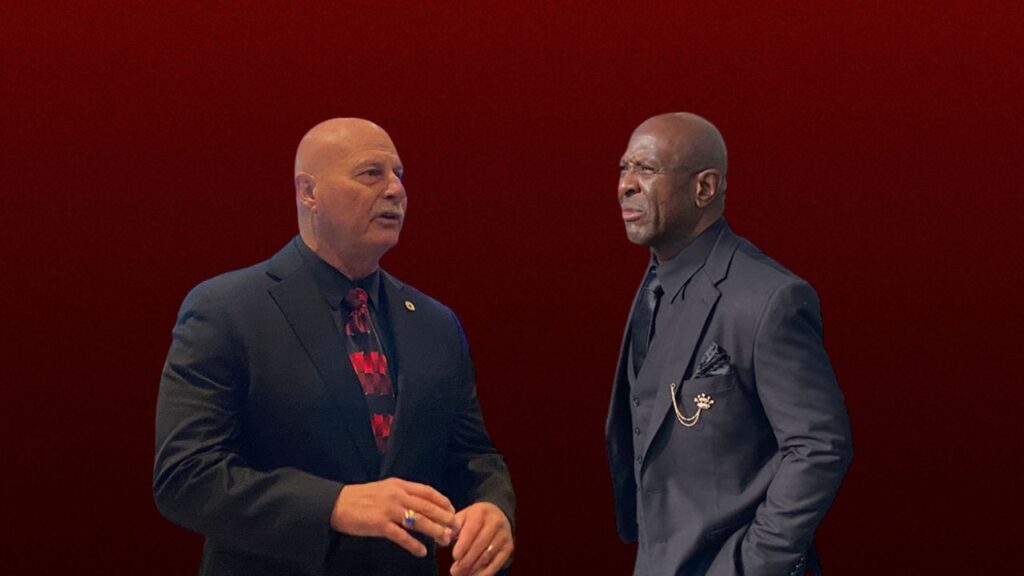Share
If the pursuit of a COVID-19 vaccine were a horse race, a company in San Diego is either the Seabiscuit or darkhorse candidate to win.
With a newly acquired $173 million dollars from Wall Street after a public stock offering, Arcturus Therapeutics Holdings Inc. just gained some solid footing in the race.
Arcturus is a leading messenger RNA medicines company.
Singapore’s Health Sciences Authority has already approved clinical trials for a coronavirus vaccine candidate being developed by Arcturus.
As the famous race horse Seabiscuit was pushed to victory by jockey Red Pollard, Duke-NUS Medical School is hoping to ride with Arcturus in a partnership across the finish line.
A Race With Many Winners
Speaking to GV Wire℠ by Zoom, Arcturus CEO Joe Payne realizes his company is one of many developing vaccines.
“I don’t think there’s one horse that wins this race. I think there’s several,” said Payne.

“I don’t think there’s one horse that wins this race. I think there’s several.” — Arcturus CEO Joe Payne
Payne believes his company’s advantage is in how much of its messenger RNA can be produced on a global scale.
In partnership with Catalent to make the vaccine, Payne believes the sky is the limit.
“We have no limitations on capacity. I would say instead of a few million, we can now do potentially hundreds of millions of vaccine through 2020 and 2021,” said Payne.
Asked by GV Wire℠ if this vaccine candidate could also protect against future mutation of the COVID-19 virus, Payne explained that it covers a full length of spike protein, thus it would cover a mutation at either end.
“We’re in a good place for protecting individuals in case there is a mutation or multiple mutations,” Payne said
Traditional vs. RNA Vaccines
Traditional vaccines work by mimicking an infectious agent, and by doing so, train our bodies to respond more rapidly and effectively against them.
But RNA vaccines, like those produced by Arcturus, work by introducing an mRNA sequence (the molecule which tells cells what to build) which is coded for a disease-specific antigen. Once produced within the body, the antigen is recognized by the immune system, preparing it to fight the real thing.
The process is very clean. Payne says, “We’re completely devoid of any viruses, any viral vectors or any adjuvants.”
According to the University of Cambridge, a major advantage of RNA vaccines is that RNA can be produced in the laboratory from a DNA template using readily available materials, less expensively and faster than conventional vaccine production, which can require the use of chicken eggs or other mammalian cells.
[covid-19-tracker]Positive Pre-Clinical Data on Animals
Rodents were immunized with a single dose of the vaccine candidate, and 100% of them developed antibodies by day 19.
“If it reproduces what we’ve seen in animals, this is gonna be a very big deal,” Payne said
Catalent Manufacturing
Vaccine production is underway at Catalent Inc.‘s facility in Madison, Wisconsin.
“Catalent is proud to partner with Arcturus in the pursuit of a vaccine that could protect people against the coronavirus pandemic,” said John Chiminski, chair and CEO of Catalent, in a statement.
The COVID-19 vaccine program will take advantage of the facility’s manufacturing suite that can produce batches at multiple scales and support Arcturus’ proprietary mRNA manufacturing process.
Arcturus is also simultaneously working with labs across the globe to manufacture even more.
Israeli Ministry of Health
The Israeli Ministry of Health recently signed a deal with rights to stockpile and reserve doses of the Arcturus vaccine candidate.
The Israeli government will be responsible for distributing the vaccine to its citizens.
Payne says interest continues to grow: “It’s becoming more and more apparent that people would like to gain access and rights and begin to start to supply our vaccines.”
Singapore Early Supporter
For the vaccine development itself, the country of Singapore is funding it.
“East Asia is where this epidemic broke out. And the government of Singapore reached out to us early in this process,” explained Payne.
The country then brought in the Duke Medical School and the University of Singapore to create the Duke-NUS Medical School.



















